Specimen Showcase | Legs Around
- Hong Kong Biodiversity Museum

- Mar 13
- 3 min read
Encountering a giant centipede in Hong Kong in the middle of the night is always a surprise, but wait to meet the giant species introduced here.
The Amazonian giant centipede, 𝘚𝘤𝘰𝘭𝘰𝘱𝘦𝘯𝘥𝘳𝘢 𝘨𝘪𝘨𝘢𝘯𝘵𝘦𝘢 Linnaeus, 1758, is simply the largest centipede species in the world, with some individuals reaching up to 30 cm in length. They are commonly found in damp and dark places of South American tropical forests. This species is an impressive predator feeding on insects like crickets and roaches, but also, more surprisingly, on vertebrates such as mice, lizards, snakes (some nearly 25 cm long, yes!), and even bats which are much larger😱! On many occasions, the 𝘚𝘤𝘰𝘭𝘰𝘱𝘦𝘯𝘥𝘳𝘢 were observed hanging at the entrance or within the ceiling of caves where bats colony live in, and catching the bats as they fly by or perch near them. An incredible feat when you think about it!
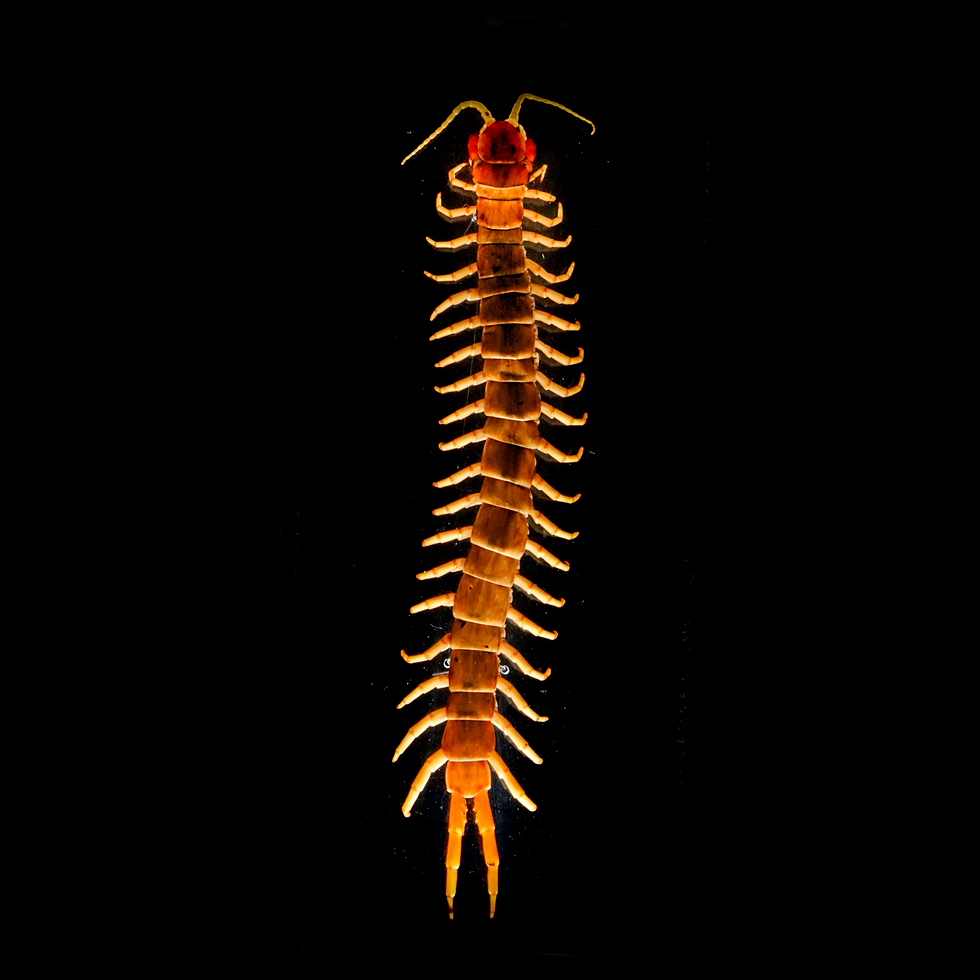
When a bat 🦇 flies back to its cave, the Amazonian giant centipede can capture it with the first eight pairs of legs, seven pairs of legs in the middle is hanging in the air, while at the same time attach to the ceiling with the last (and only!) five pairs of legs. The 𝘚𝘤𝘰𝘭𝘰𝘱𝘦𝘯𝘥𝘳𝘢 can hang from there with ease because its long and spiny hind legs are acting like hooks to anchor itself. It will then pierce through the bat’s neck with its forcipules, which look like fangs or mouthparts but are actually modified legs containing venom glands. The bat will soon stop moving since it is being subdued by the neurotoxic venom injected into its neck.
The venom of 𝘚𝘤𝘰𝘭𝘰𝘱𝘦𝘯𝘥𝘳𝘢 𝘨𝘪𝘨𝘢𝘯𝘵𝘦𝘢 is known for its hemolytic effects and causes instant paralysis in crickets and roaches, while it is also able to kill relatively large vertebrates like snakes and bats. Fortunately for us, the venom is not lethal to humans, but it will definitely cause severe pain, localized necrosis, dizziness, headache, and in Brazil, bites of the giant centipedes are responsible for 5% of envenomation cases reported in hospitals.
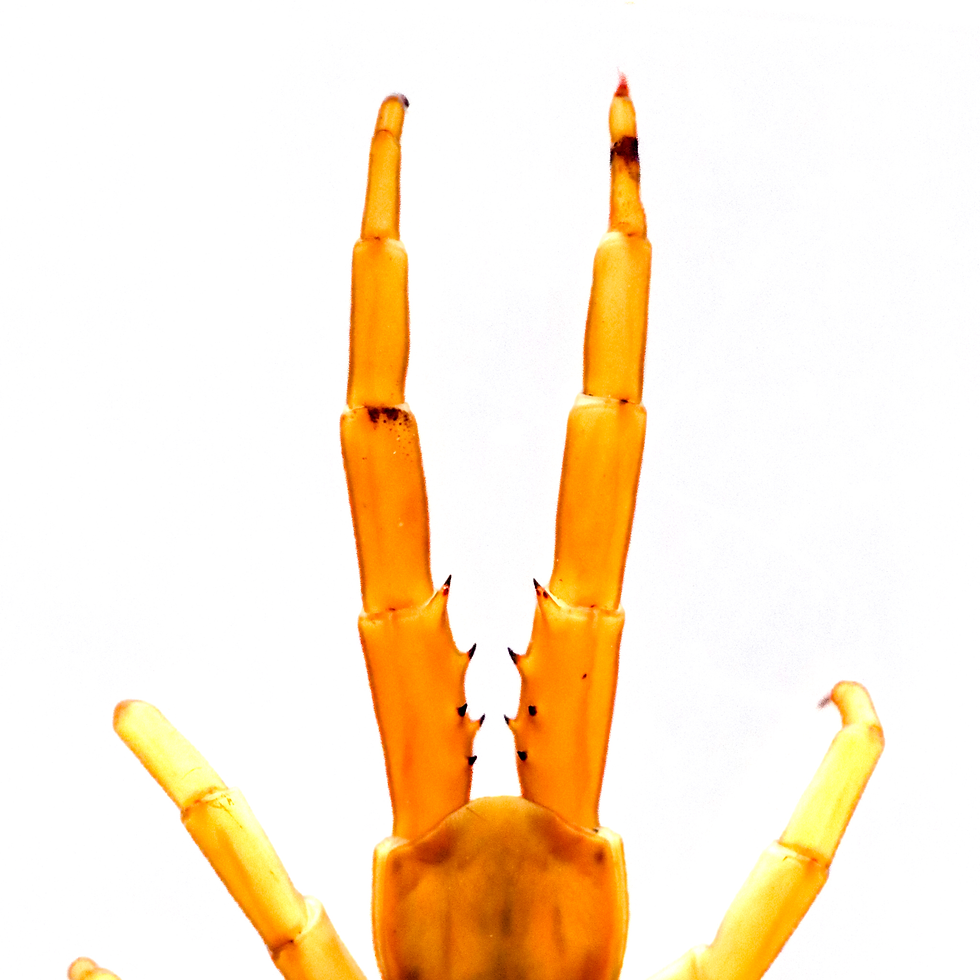
The Amazonian Giant 𝘚𝘤𝘰𝘭𝘰𝘱𝘦𝘯𝘥𝘳𝘢 is thus an impressive predator, and it is also well equipped to defend itself against its own predators. When it detects a potential threat approaching from behind, the 𝘚𝘤𝘰𝘭𝘰𝘱𝘦𝘯𝘥𝘳𝘢 will then raise its spiny rear legs to form a warning posture 🥊 and if the predator is too insisting, it will use them for defensive stabbing.
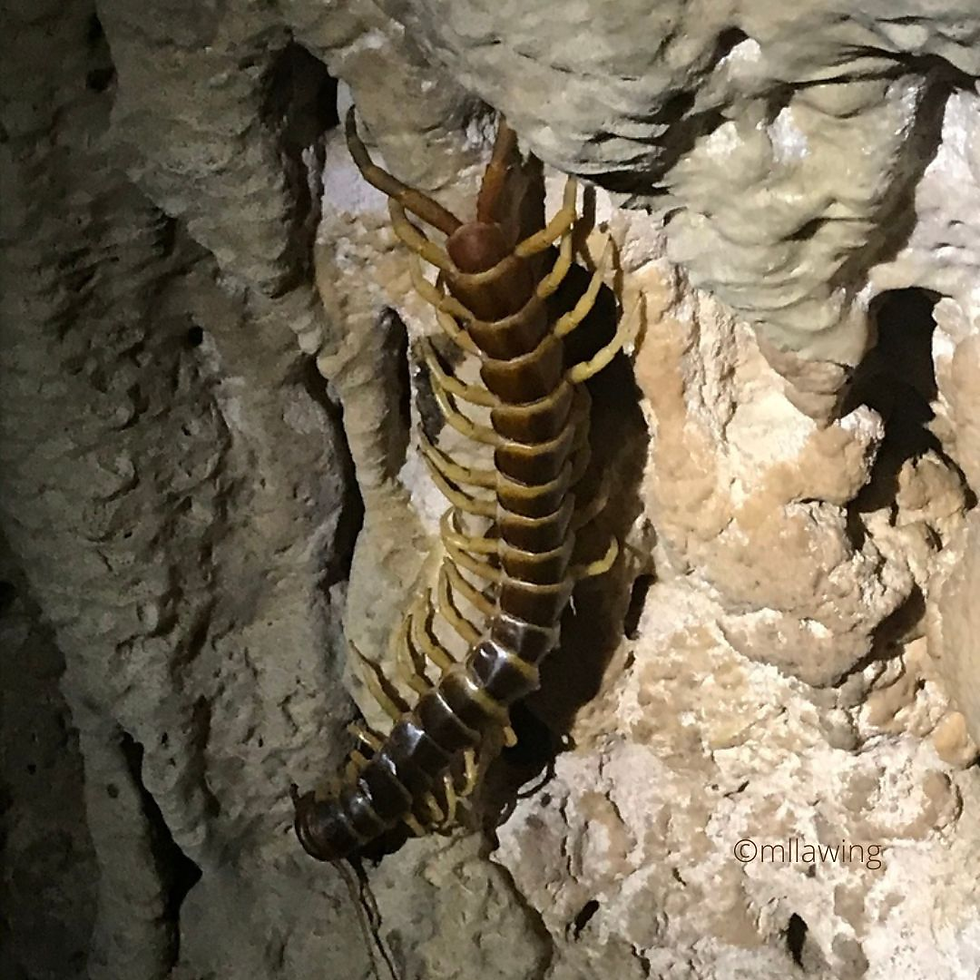
Nonetheless, the hind legs of 𝘚𝘤𝘰𝘭𝘰𝘱𝘦𝘯𝘥𝘳𝘢 are not only used for anchoring and self-defense, but also during ritualized meetings with other 𝘚𝘤𝘰𝘭𝘰𝘱𝘦𝘯𝘥𝘳𝘢 and for courtship behaviors. In a head-to-head contact, two 𝘚𝘤𝘰𝘭𝘰𝘱𝘦𝘯𝘥𝘳𝘢 were observed to turn around and grip each other with their rear legs🤝🏻. This ritual may be performed to prevent aggressive interactions during which one or both protagonists could be injured. During courtship behavior👫🏻, the centipedes were seen to tap or stroke the hind legs of the opposite sex with their antennae. The male 𝘚𝘤𝘰𝘭𝘰𝘱𝘦𝘯𝘥𝘳𝘢 will then deposit a spermatophore (a kind of small package full of sperms), which will then be picked up by the female for fertilization.
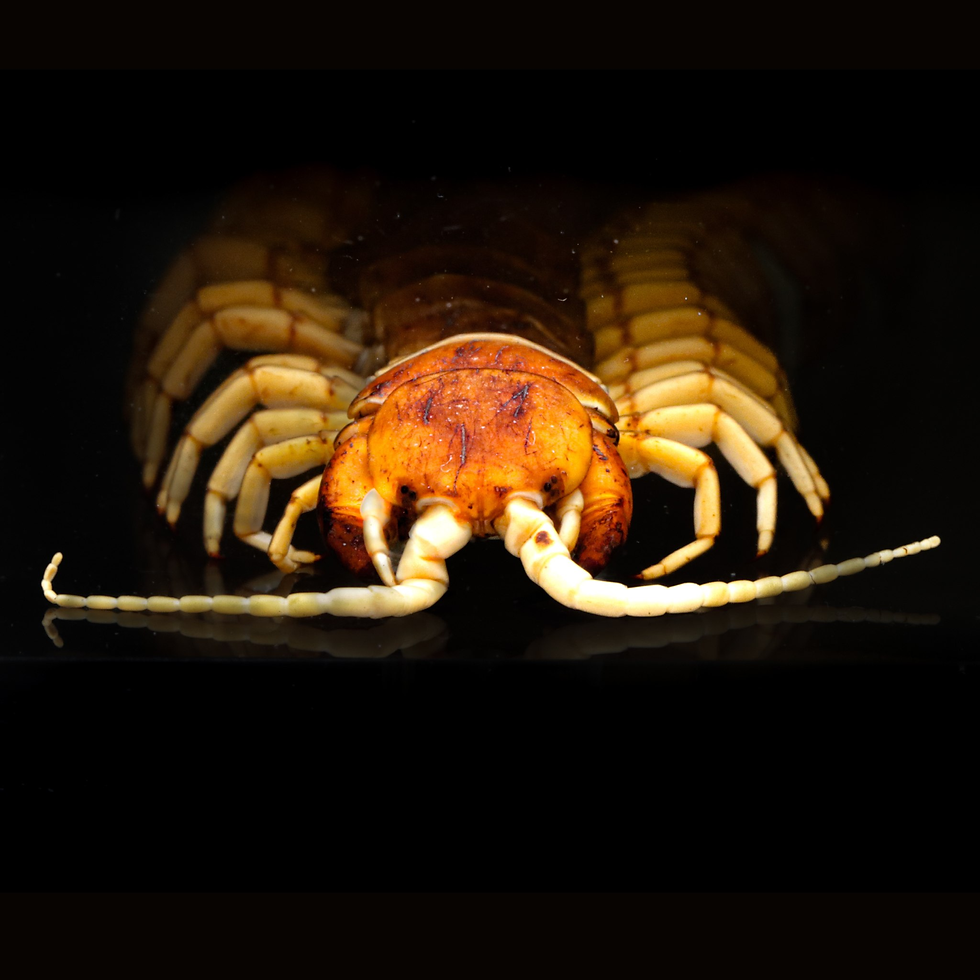
A fully-grown centipede can be an aggressive creature. However, before becoming those fierce predators, juveniles 👶🏻 hatching from their eggs are defenseless. Different from some other centipede species in which new pairs of legs are acquired along the molting process, Amazonian Giant 𝘚𝘤𝘰𝘭𝘰𝘱𝘦𝘯𝘥𝘳𝘢 juveniles are completely formed after hatching and look like miniature versions of the adults. However, even with 21-23 pairs of legs, the larvae are immobile and unable to feed themselves. But no worries, the mother who took care of them and cleaned them when they were eggs, will continue to guard them 🤱🏻 during the immature stage and until they molt several times and become independent. Despite their grim looks, centipedes are actually better mothers than expected. Yet this maternal care has its limits, with the females abandoning or even eating her offspring when disturbed.
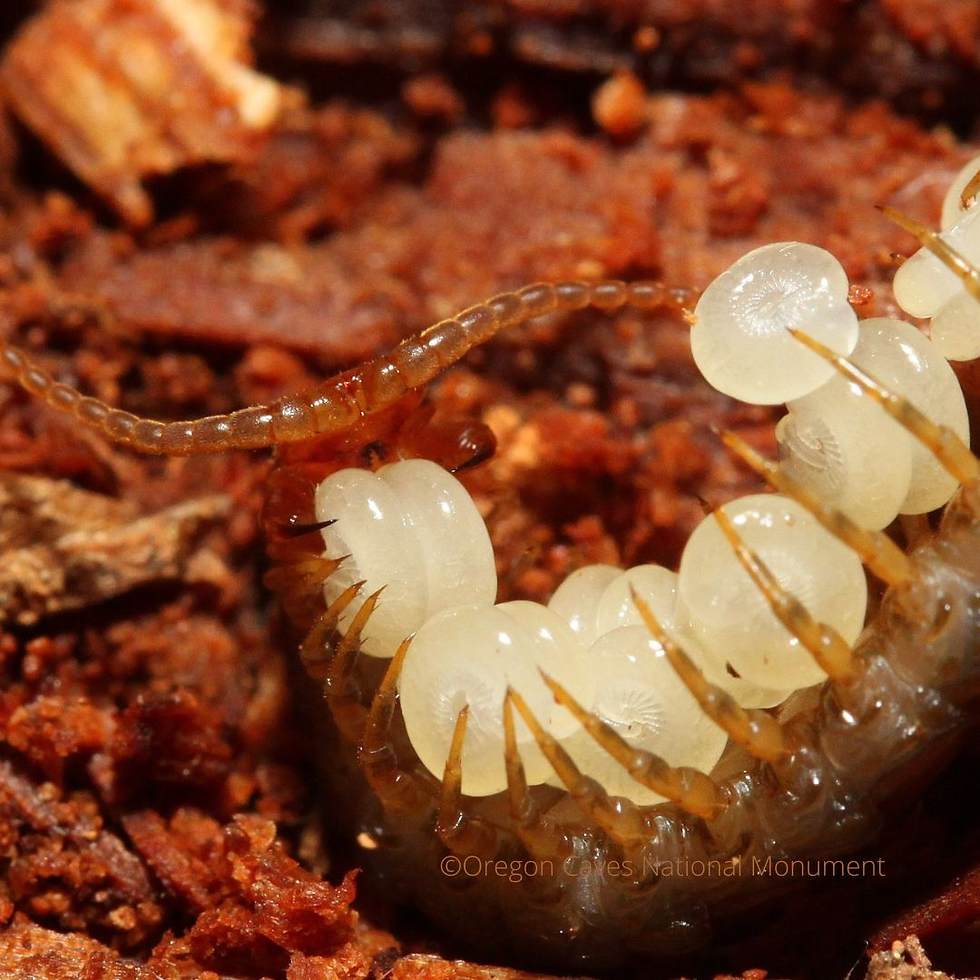
A species under the same genus, 𝘚𝘤𝘰𝘭𝘰𝘱𝘦𝘯𝘥𝘳𝘢 𝘮𝘶𝘭𝘵𝘪𝘥𝘦𝘯𝘴 Newport, 1844, also known as the urban giant centipede, can be found in Hong Kong and is being displayed in our museum. Visit the HKBM to see the specimen in person and learn more about the stories of these amazing creatures! Don’t forget to have a look at their forcipules (fangs) then!
Text: Arthur Lai




Comments